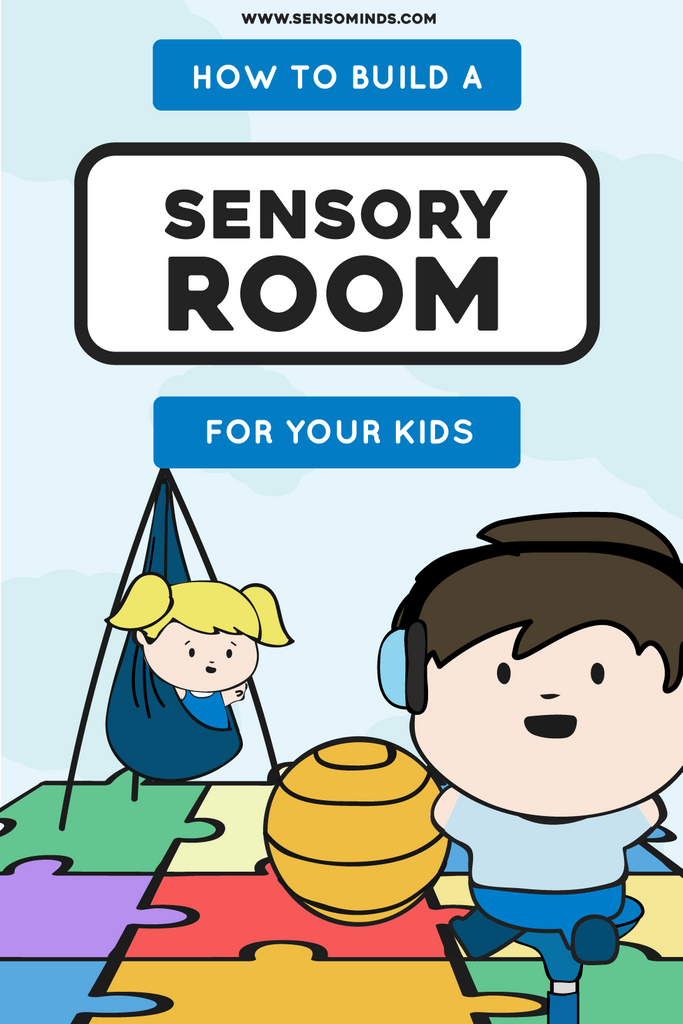Imagine a room or space that was built uniquely for you! It was your favorite color, smelled like your favorite scent as it was filled with everything that you loved. It made your body and mind feel at its best.
This is what a sensory room is! It is a space (often a whole room but doesn’t have to be) that incorporates and stimulates multiple senses and helps regulate your body.
Sensory rooms benefit children for various reasons. Children with autism or sensory processing disorders are especially prone to benefit from these spaces. They help balance their bodies and provide coping and modulation opportunities. Oftentimes, this input is calming and relaxing, in hopes of preventing meltdowns or tantrums as well as negative attempts to self soothe. However, for some children, sensory room equipment can be stimulating and alerting. Either way, this outlet is a place to regain control of emotions as well as have fun and feel safe to explore his/her environment without being judged. This space also allows for improved focus, as well as skills development (motor, sensory and cognitive).
Another benefit of sensory rooms is that they create a way for children to have open and unlimited access to specialized modalities (often used in therapy sessions). Sensory room equipment should be safe and individualized based on the child's specific sensory needs. Creating a sensory room in your home is a great way to encourage children to explore their senses and develop coping strategies.
Let’s get started at home!
Safety is the number one concern! You want your child to be able to go into this space alone without worrying about his/her safety. You want to make sure there are no sharp corners or edges, outlets are safe and there is nothing they would put in their mouth that wasn’t appropriate (i.e. chew toys are beneficial and safe, food is not recommended without supervision). Is the floor space soft and comfy? Can you put cushioned mats against some walls?
Next, you want to think about where this room or space will be located. You want it to be protected from other auditory stimulation and distractions, while simultaneously not interrupting the rest of the house. Is it accessible? (Can your child come and go as they please).This is a place where ideally your child can decide how he or she wants to interact without direction, instruction, or interruption.
If your child is verbal, ask him or her what they like? What helps their bodies? What lighting do you want in the room (is there a dark space? Can the lights be dimmed? Are there windows?)? What color(s) are on the walls? Soft neutral colors tend to be more calming as opposed to bright colors that tend to be more alerting.
The next critical question you want to ask when you are ready to create a sensory room is what need(s) am I trying to meet? What does my child seek?
Typically these sensory rooms target multiple senses. Think about the input you want. Is it auditory, vestibular, tactile. What equipment is best to use to meet these needs and allow the child to explore and engage safely and appropriately. Can they reach and open everything from a height prospective.
Here are a few sensory room equipment ideas:
- Calming Weighted Blanket
- Sensory Ocean Wave Projector
- Earmuffs/noise reducing headphones
- Sensory Chew Necklace
- White noise/sound machine/music
- Aromatherapy (diffusers)
- Body sock/sleeping bag
- Building
- Swings
- Ball pit
- Resistance tunnel
- Trampoline
- Therapy balls
- Balance beam
- Sensory bins (with a variety of textures to meet multiple senses: rice, resistive putty-play doh), fidgets, play sand).
- Pillows/mattresses (for crashing and jumping)
These are just a few ideas and pieces of equipment that can be beneficial for a sensory room at home. The possibilities are endless but these are ones we have seen children gravitate towards while providing appropriate input. Make it FUN while meeting your child's needs, and it will be a place your child is guaranteed to LOVE!



Leave a comment: